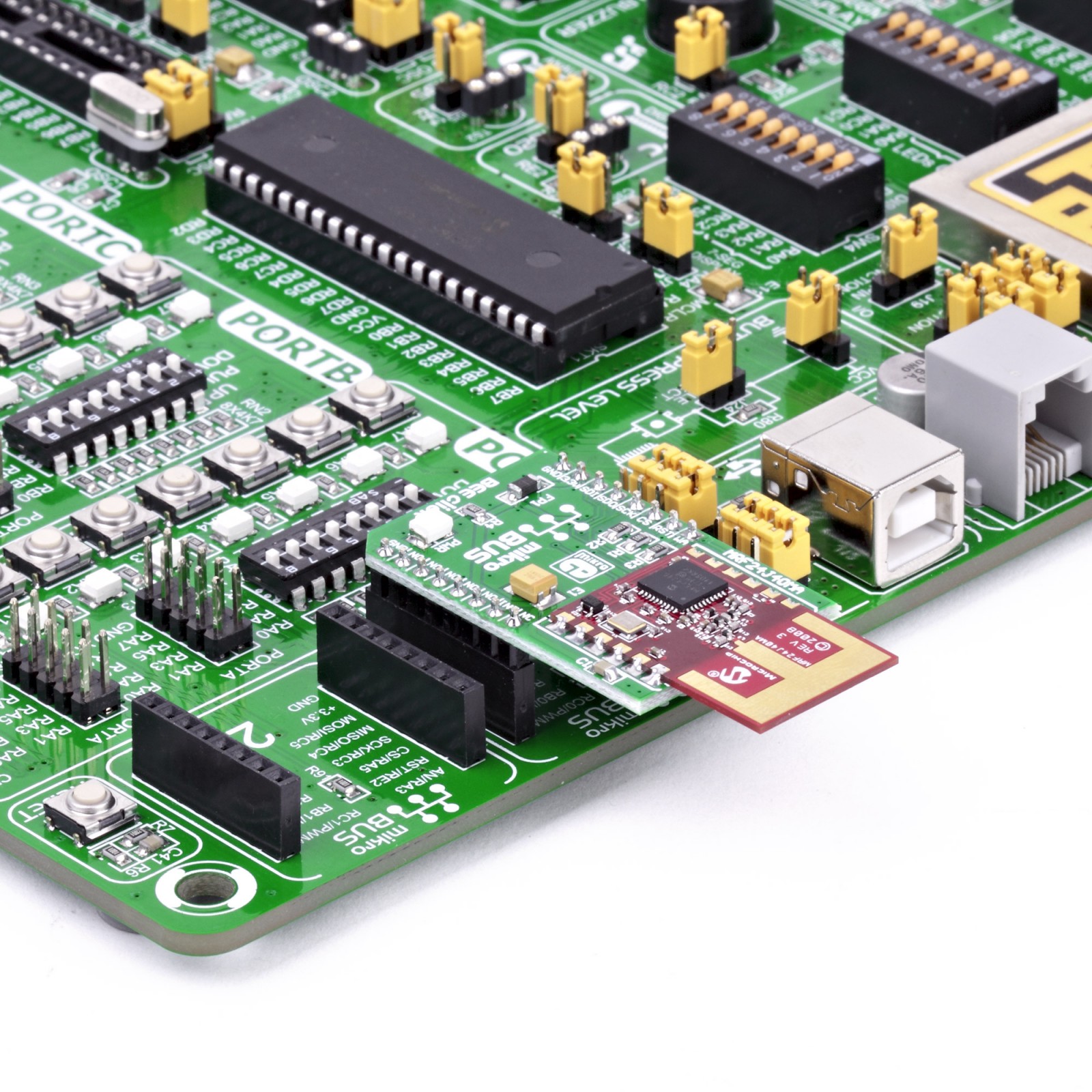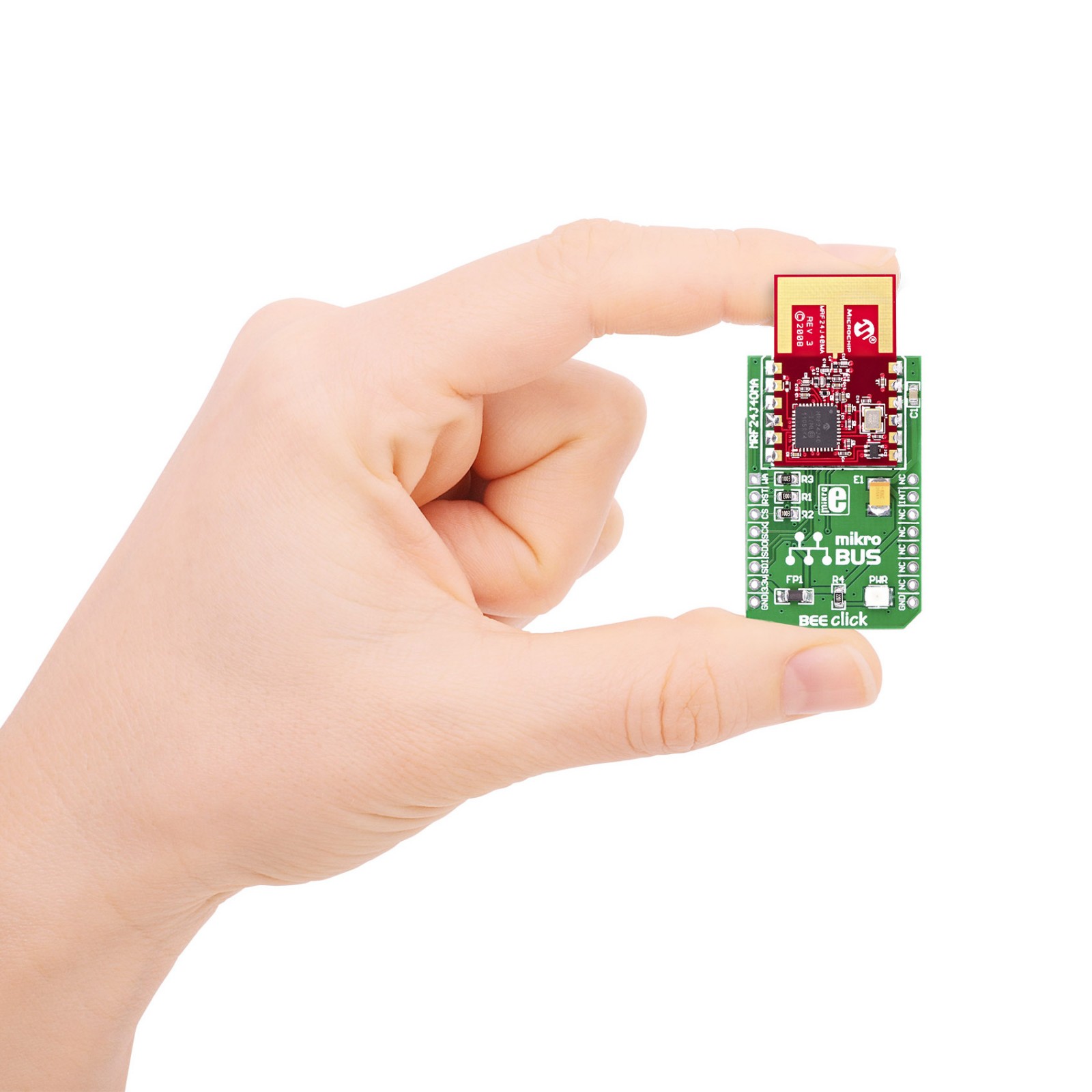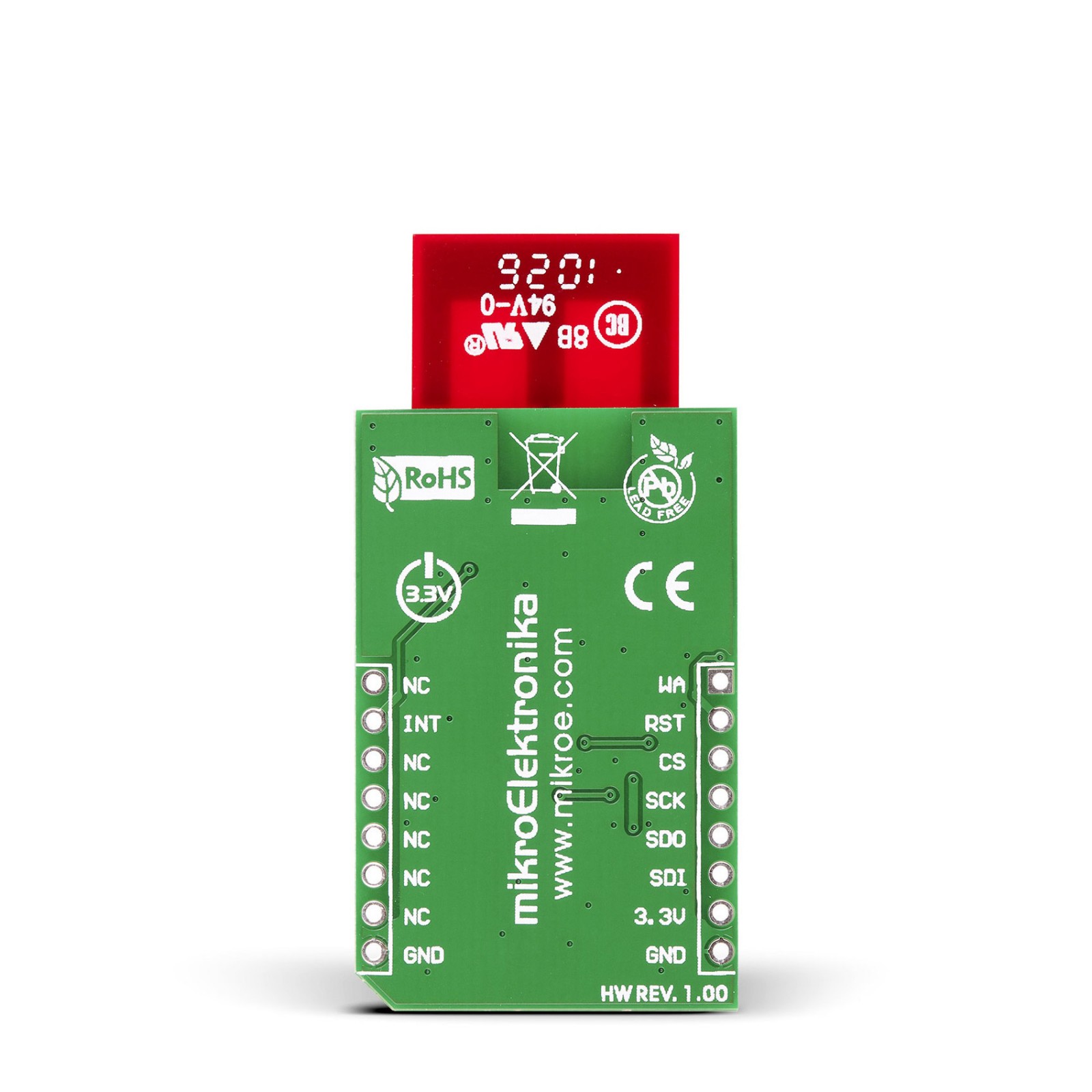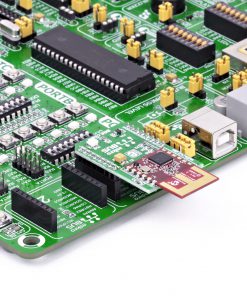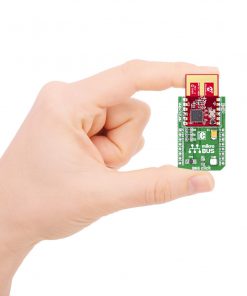BEE Click
R790.00 ex. VAT
BEE Click is a compact add-on board that contains a fully integrated ZigBee transceiver. This board features the MRF24J40MA, a 2.4GHz RF transceiver module from Microchip. It is an IEEE802.15.4 standard-compliant RF receiver and supports ZigBee, MiWi, MiWi P2P, and proprietary wireless networking protocols. The module has low current consumption and can be a module of choice for battery-powered devices while achieving a distance range in data transmission of up to 120m. This Click board™ makes the perfect solution for the development of ZigBee smart energy applications, wireless alarms and security, remote monitoring, and other electronic applications that need wireless communication.
BEE Click is supported by a mikroSDK compliant library, which includes functions that simplify software development. This Click board™ comes as a fully tested product, ready to be used on a system equipped with the mikroBUS™ socket.
Stock: Lead-time applicable.
| 5+ | R750.50 |
| 10+ | R711.00 |
| 15+ | R671.50 |
| 20+ | R646.22 |


